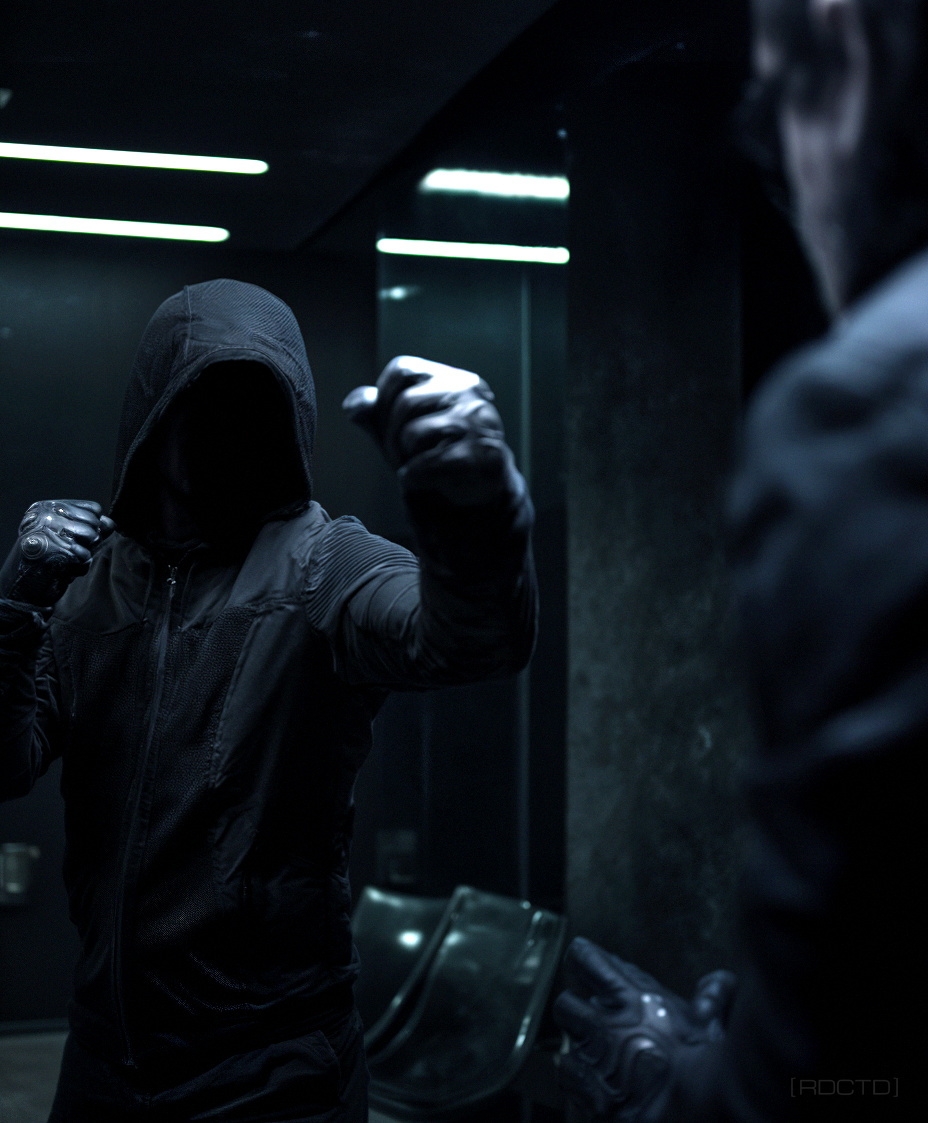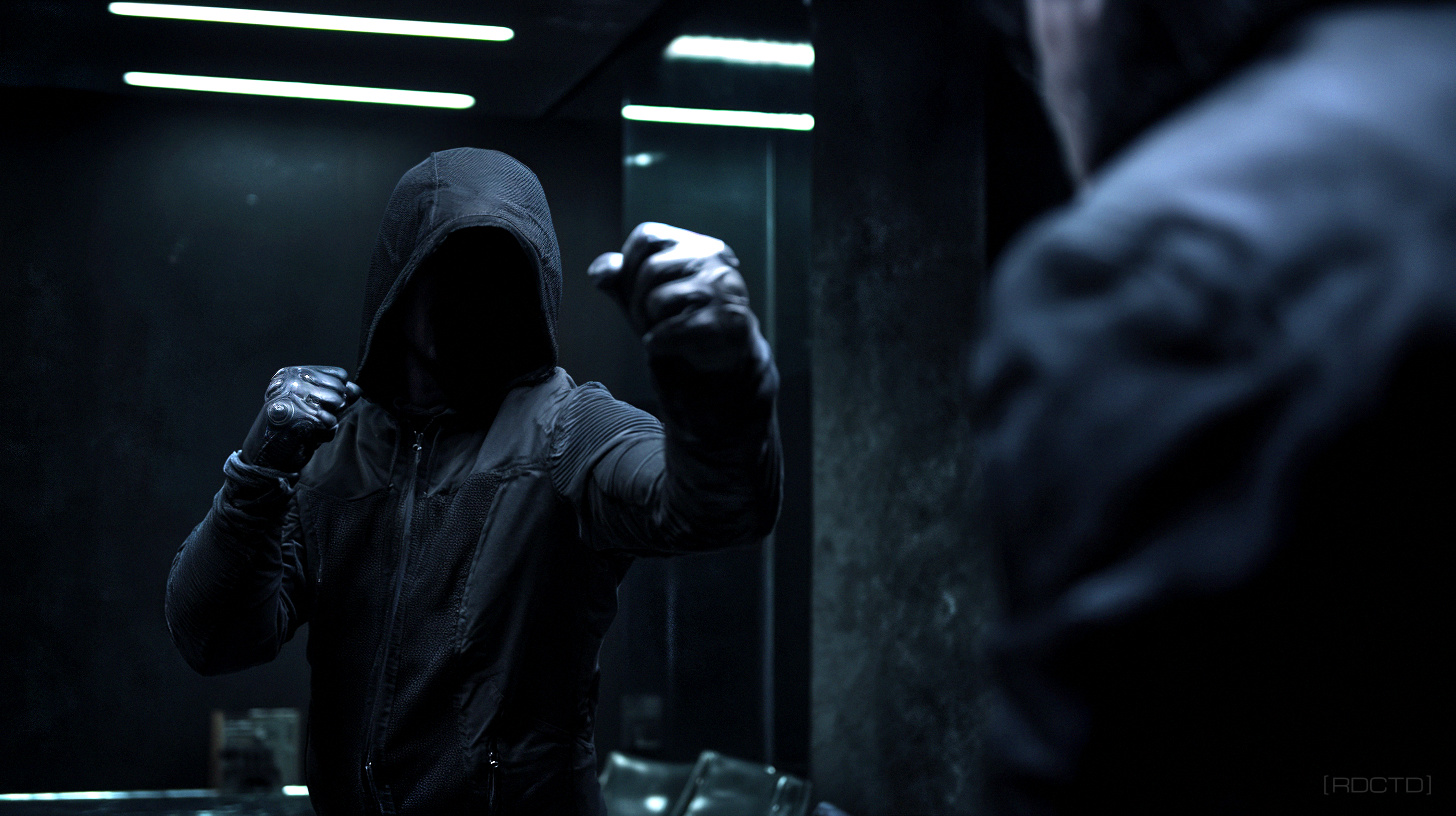 A mindset of pre-committed bias for decisive action under threat, forged by regulating physiology, compressing decisions, and executing practiced tradecraft to seize initiative and end the fight fast.
A mindset of pre-committed bias for decisive action under threat, forged by regulating physiology, compressing decisions, and executing practiced tradecraft to seize initiative and end the fight fast. ![]()
Tradecraft simplifies combat – hide intent, reveal effect, deny pattern… the enemy reads only the ending, after it’s too late.
![]()
The combatives mindset starts with identity. You’re a covert operative, not a tourist in violence. Your job is to impose order under threat. That requires a stable self-concept anchored to mission. When chaos spikes, identity drives behavior faster than conscious talk. Commit to action before chaos hits, while calm when it does. Train to move on cold decision, never emotions, with a directive that’s strategic, optimally rehearsed, and mission-driven.
![]()
Your eyes are sensors, not spectators. Feed them tasks and they’ll feed you the fight.
![]()
[ PHYSIOLOGY ]
![]()
Body systems is the front. Expect sympathetic arousal – heart rate spike, vasoconstriction, tremor, auditory exclusion, tunnel vision, and time distortion.
The body votes first when chaos starts. Vision narrows, pulse climbs, and the hands tell the truth. If you can’t steady the frame, your skills arrive late. Control the frame and the mind follows.
• Train to keep heart rate: in the performance band (roughly 115–145 bpm), using breathing protocols: 4×4 box, 4-2-6-2 tactical, or cyclic sighs. Paired with tall posture, unlocked knees, and smooth gait to preserve fine motor control.
• Move with intent: heel-to-toe walk under load, relaxed shoulders, neutral neck, and a light grip until contact. Avoid white-knuckle clench that accelerates fatigue and shakes.
• Use stress inoculation: progressive reps with noise, pain stimulus, sleep debt, crowding, low light, and force-on-force. This way the body normalizes adrenaline and you can still index gear, work safeties, and read the scene.
• Track adaptation, not bravado: log heart-rate variability (e.g., rMSSD trend), waking pulse, grip strength, and reaction times to confirm resilience is improving.
• Manage inputs before contact: hydration, electrolytes, moderate caffeine only, and warm-up drills for hands and eyes – to blunt startle.
After contact, expect parasympathetic backlash – drop in blood pressure, shakes, nausea, tunnel “opening,” and fatigue. Manage it with paced breathing, small sips of fluid, glucose, light movement, and a scripted debrief to keep cognition online.
Build an after-action routine immediate safety check, comms, casualty sweep, weapon status, then five-minute physiological reset so you don’t crash while decisions still matter. This is craft you can measure and repeat.
![]()
Momentum should feel like gravity. Pulling the mission home.
![]()
[ COGNITION ]
![]()
Awareness must be pre-wired. Under load, Hick’s Law punishes indecision as option count rises. Reduce choices before contact with “pre-need” decisions and explicit triggers – if X, then Y, no debate.
Thought is slow when choices multiply. Under pressure, the brain reaches for familiar shapes. Pre-built patterns decide who moves first. Templates turn confusion into something you can count.
Working memory is scarce. Assume 3–4 chunks – so offload to pocket cards, brevity codes, and simple contingency branches you can execute cold.
Add latency drills with a verbal cue to compress perceive-decide lag.
Use tactical decision games and sand-table runs to stress the model, then rewrite heuristics immediately while the feel is fresh. This is tradecraft that turns recognition into speed without sacrificing control.
![]()
Threats grow in blind spots. Reduce angles and they shrink.
![]()
[ EMOTION ]
![]()
Impulse is a tool, not a passenger. Confidence must be calibrated by recent performance, not ego.
Feelings show up uninvited and loud. They can fog the glass or sharpen the edge. What you do with them separates control from drift. You decide whether they steer or ride shotgun.
Build this emotional drill into stress blocks – noise, pain, and time pressure – so your affect tracks the task, not the other way around.
This is emotional intelligence that keeps the prefrontal online while you apply force with restraint and precision.
![]()
Discipline beats adrenaline. Adrenaline burns fast, discipline burns through.
![]()
[ BEHAVIOR ]
![]()
Execution must reflect tradecraft, not theatrics. Movement is information discipline in motion – slice the pie on entries, favor oblique lines, use cover-to-cover travel, and keep gestures economical.
Fights are solved by feet, not speeches. Small angles rewrite big problems. The audience is the environment, and it’s hard to impress. Terrain rewards economy and punishes drama.
• Instrument your training: timers, hit accountability, video for micro-errors, and force-on-force to confirm effect under friction.
Measure entries by “time-to-cover” and “time-to-first-effective-action,” not just hits. Run one-handed only blocks for both sides, then add movement and reloads to expose real gaps. Finish with a forced transition drill – tool to empty hand to tool – so flow stays intact when the fight changes.
Weapon or empty hand, priorities don’t change – detect, decide, dominate, disengage – while maintaining standoff and angle.
Your standard is repeatable effect when tired, cold, and under observation – anything else is theater.
![]()
Restraint is a weapon with the safety on. It lets you keep aim without spilling purpose.
![]()
[ FINAL ]
![]()
Intent and restraint frame the whole fight. Define the outcome you want, then cut every move that doesn’t serve it. Treat authority, necessity, and proportionality as live control surfaces, managed in real time, not after-action notes. You’ll be judged twice – by the moment and by the aftermath – so make restraint a trained default and escalation a deliberate choice.
Debrief hard. Extract lessons with brutal honesty and convert them into updated heuristics/a>. Combat mindset isn’t a switch; it’s a maintained system that keeps thinking clear, actions clean, and effects aligned with mission.
![]()
// An operative’s mind has a preloaded plan with a hair trigger for clarity. It acts before fear finishes its sentence.
![[RDCTD]](https://rdctd.pro/wp-content/uploads/RDCTD-Covert-Operative-Tradecraft-Guide-LOGO-tk.png)
![[RDCTD]](https://rdctd.pro/wp-content/uploads/RDCTD-Covert-Operative-Tradecraft-Guide-LOGO-mobile.png)

